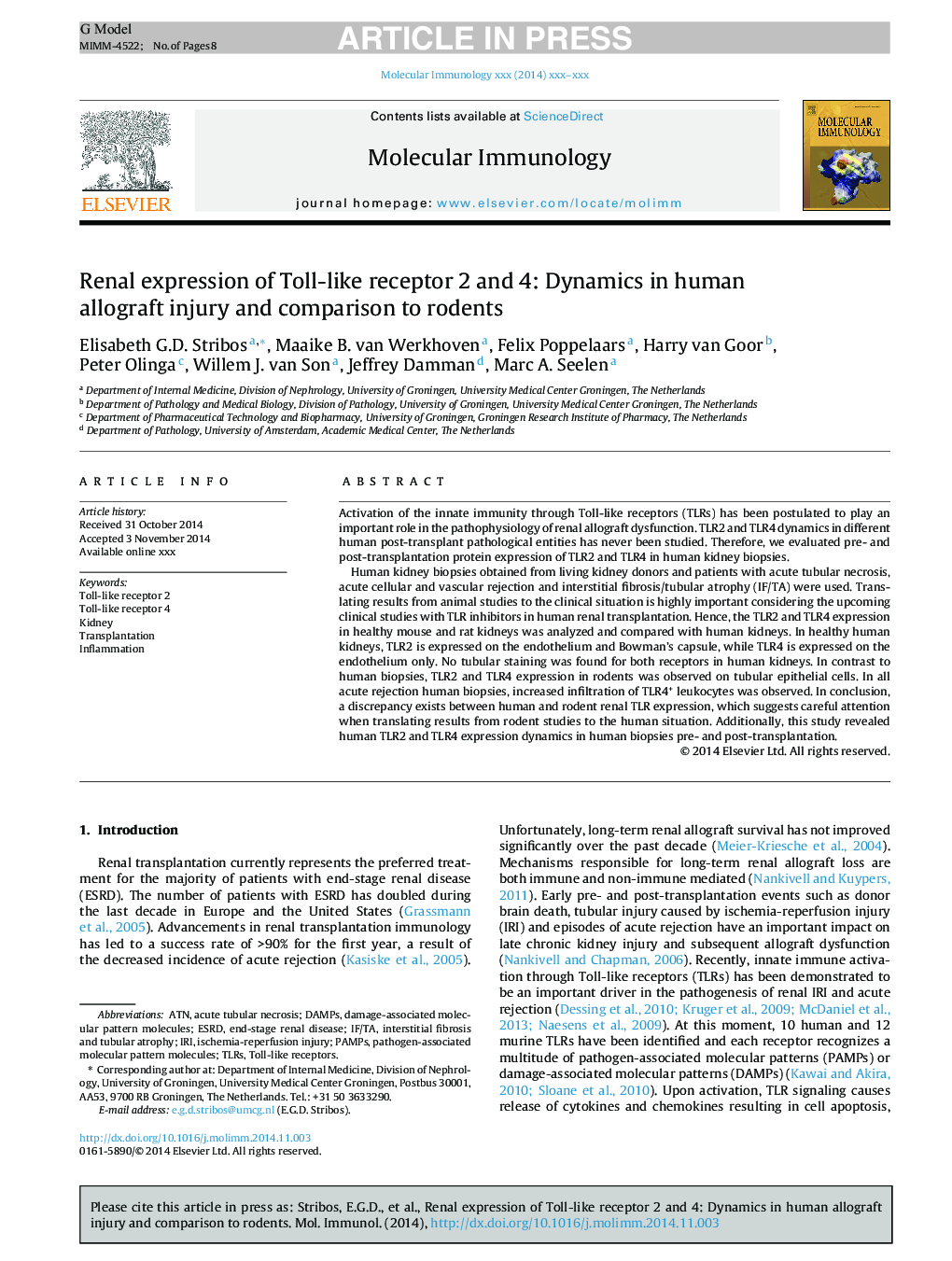| Article ID | Journal | Published Year | Pages | File Type |
|---|---|---|---|---|
| 5916586 | Molecular Immunology | 2015 | 8 Pages |
Abstract
Human kidney biopsies obtained from living kidney donors and patients with acute tubular necrosis, acute cellular and vascular rejection and interstitial fibrosis/tubular atrophy (IF/TA) were used. Translating results from animal studies to the clinical situation is highly important considering the upcoming clinical studies with TLR inhibitors in human renal transplantation. Hence, the TLR2 and TLR4 expression in healthy mouse and rat kidneys was analyzed and compared with human kidneys. In healthy human kidneys, TLR2 is expressed on the endothelium and Bowman's capsule, while TLR4 is expressed on the endothelium only. No tubular staining was found for both receptors in human kidneys. In contrast to human biopsies, TLR2 and TLR4 expression in rodents was observed on tubular epithelial cells. In all acute rejection human biopsies, increased infiltration of TLR4+ leukocytes was observed. In conclusion, a discrepancy exists between human and rodent renal TLR expression, which suggests careful attention when translating results from rodent studies to the human situation. Additionally, this study revealed human TLR2 and TLR4 expression dynamics in human biopsies pre- and post-transplantation.
Keywords
pathogen-associated molecular pattern moleculesIF/TADAMPsPAMPsATNIRITLRsIschemia-reperfusion injuryinflammationESRD یا end stage renal diseaseEnd-stage renal diseaseInterstitial fibrosis and tubular atrophydamage-associated molecular pattern moleculesAcute tubular necrosisTransplantationKidneyToll-like receptor 2Toll-like receptor 4Toll-like receptors
Related Topics
Life Sciences
Biochemistry, Genetics and Molecular Biology
Molecular Biology
Authors
Elisabeth G.D. Stribos, Maaike B. van Werkhoven, Felix Poppelaars, Harry van Goor, Peter Olinga, Willem J. van Son, Jeffrey Damman, Marc A. Seelen,
